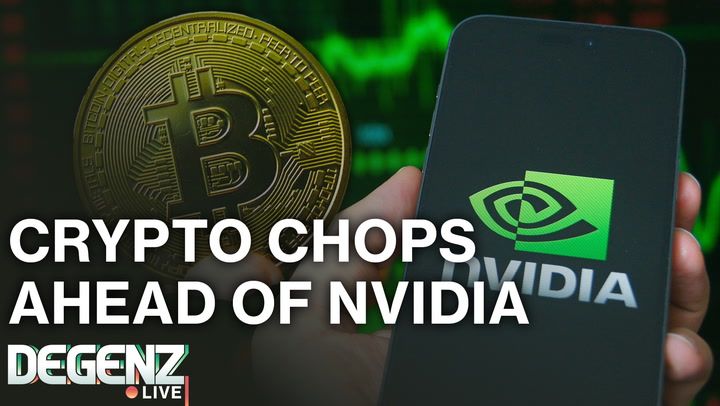Bitcoin’s Faster Selloffs Define This Chop: NVDA Looms, Kraken Secures $800M, Fidelity Launches SOL ETF
Crypto edges higher before Nvidia earnings as Bitcoin’s selloff compresses to 42 days. Kraken raises $800M, Fidelity rolls out SOL ETF, Mt. Gox shifts 10,608 BTC, banks get crypto nod.

Because Bitcoin
November 19, 2025
Crypto majors held a gentle bid into Nvidia’s earnings, with BTC near $91,300, ETH at $3,090 (+2%), BNB at $922 (+1%), and SOL at $139 (+1%). On the leaderboard: MYX (+38%), STRK (+30%), and ZEC (+10%). The headline, though, isn’t the green—it’s the cadence of the red. Bitcoin’s latest ~30% drawdown finished in about 42 days, compared with roughly 77 days in April 2025 and 147 days in Summer 2024. The selloffs are getting shorter and sharper.
Let’s focus there. Compressed drawdowns usually reflect a market structure where liquidity is abundant until it isn’t. Spot ETFs, 24/7 perps, and options market-making have tightened reflexes on both sides of the tape. When positioning skews and liquidity pockets thin, the unwind accelerates—risk is repriced in days, not quarters. In this environment: - Dealers hedge faster and more mechanically, particularly around options expiries, which can amplify moves intraday. - Basis trades and ETF flow arb tighten spreads on the way up, then flip to force-selling when momentum breaks. - Retail and quant systems often share similar triggers (funding, volatility bands, on-chain flows), making exits crowded.
Psychologically, compressed cycles keep participants reactive. Investors often overfit to recent speed, which can push them to buy late and sell early. Businesses—exchanges, market makers, liquidity providers—optimize for velocity, but that efficiency can increase the amplitude of drawdowns when liquidity rotates away. Ethically, this speed punishes poor risk controls. The answer is not bravado; it’s sizing and pre-committed risk rules. In a faster market, discipline compounds.
Macro still matters. Nvidia’s print often feeds into a broader liquidity narrative that crypto tracks—higher risk appetite tends to support beta, while disappointing guidance can drain it. I’d watch options skew and spot-ETF net flows over the next 72 hours; they’ve been reliable reads on whether this bounce has sponsorship or is just short-covering.
Around the ecosystem: - Kraken raised $800M at a $20B valuation, backed by Jane Street, DRW, and Oppenheimer, with Citadel taking a $200M stake. That cap table signals continued institutional appetite for regulated crypto market infrastructure. - Fidelity launched a Solana ETF. If flows materialize, it could shift SOL’s liquidity profile and dampen volatility over time, similar to what spot products have done for BTC. - The Ethereum Foundation detailed an Interop Layer aimed at aligning EVM L2s so they behave like a cohesive network. If successful, users could move assets and messages across rollups with far less friction—fewer fragmented bridges, more unified liquidity. - The OCC clarified that national banks may hold and spend crypto in limited contexts, including paying gas fees and testing applications. That’s narrow, but it lowers operational friction for banks building on-chain rails. - New Hampshire issued the first Bitcoin-backed municipal bond—small step, big signal. Municipal finance experimenting with BTC collateral could broaden the buyer base if volatility risk is engineered correctly. - Mt. Gox moved 10,608 BTC—nearly $1B—from cold storage to new addresses, renewing expectations of imminent creditor distributions. Any release timeline will be closely watched by basis desks and ETF creators; distribution mechanics matter more than the headline. - Tether made a strategic investment in Ledn to grow bitcoin-backed lending, which could deepen collateral markets and create more consistent demand for BTC in credit applications.
What I’m watching next: the interaction between Nvidia’s guidance, crypto options positioning into week’s end, and any confirmation on Mt. Gox transfers to exchanges. In a market defined by faster drawdowns, the tell isn’t just price—it’s whether liquidity shows up when it’s needed.
